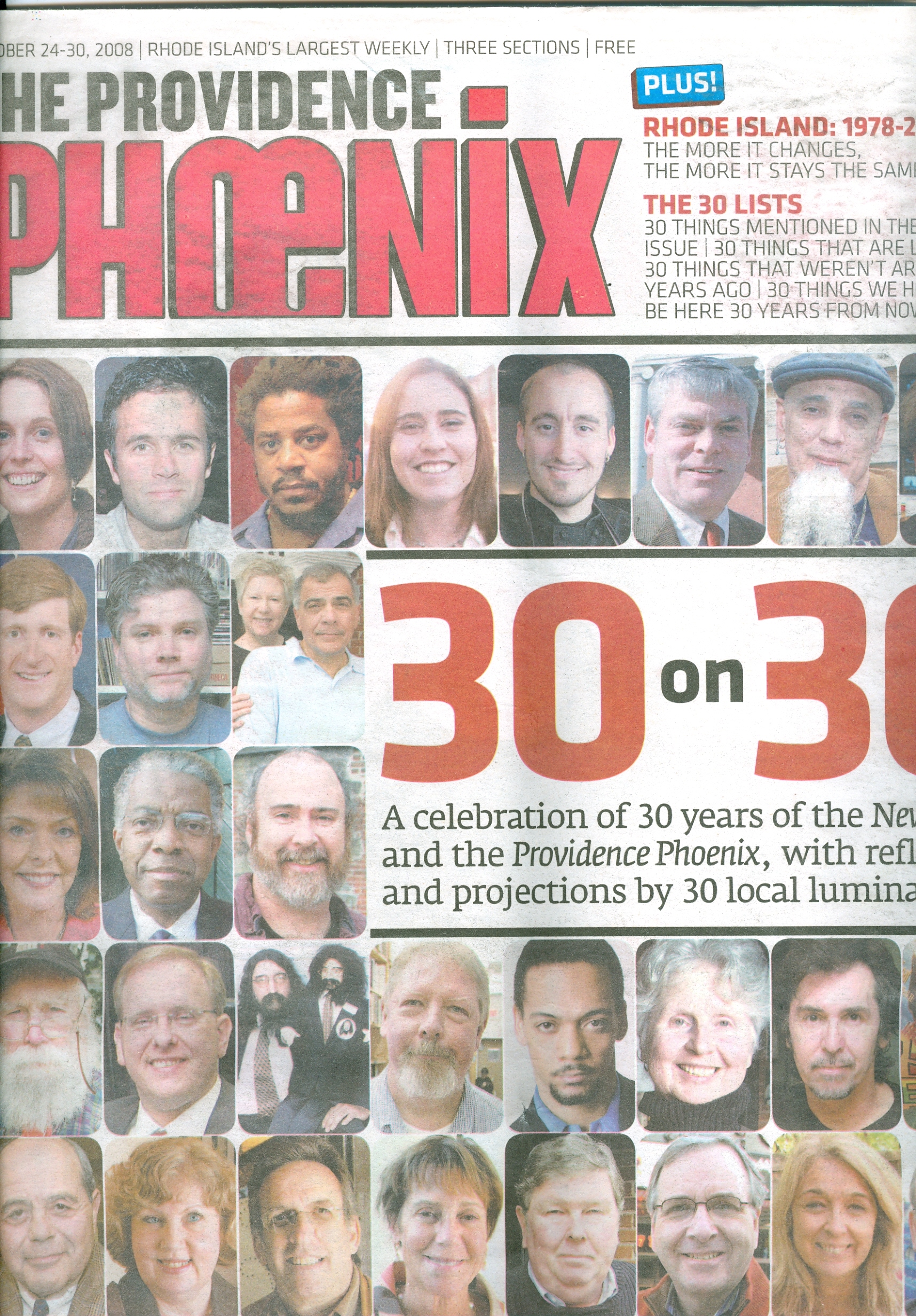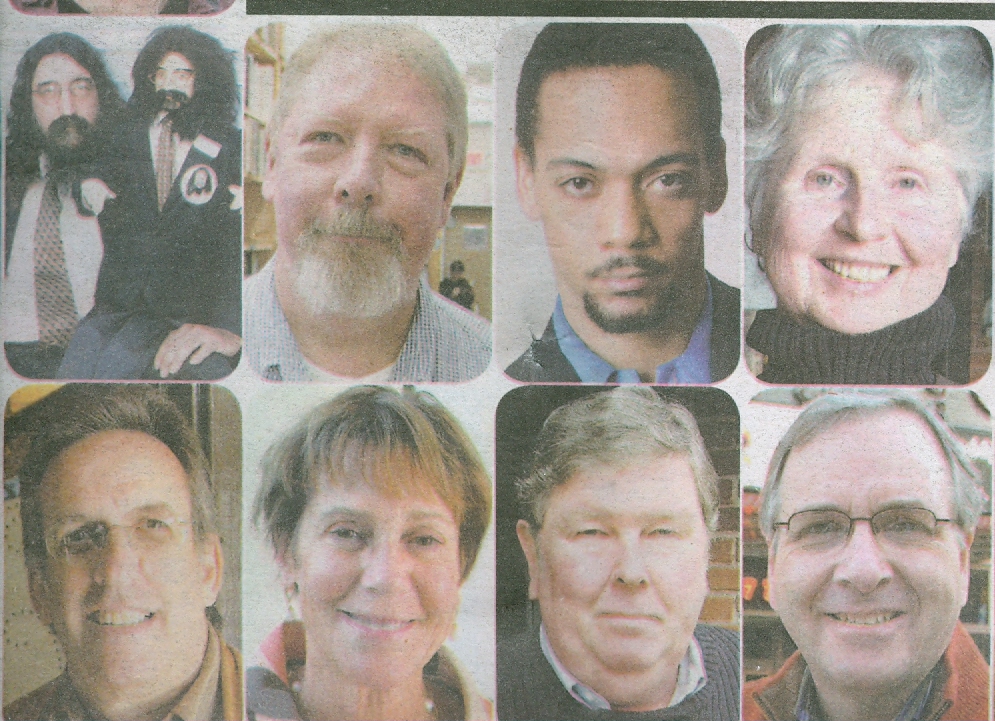The Providence Phoenix is free and readily available. It spills out of strategically-placed news stands and decorates the urban landscape of bus stations, train cars, coffee shops and street corners. But what motivates us as consumers to pick it up? What do we want?
"Why do we prefer novels and movies about familiar scenes and characters? Because for rational beings to see or recognize their experiences in a new material form is an unbought grace of life. Experience translated into a new medium literally bestows a delightful playback of earlier awareness. The press repeats the excitement we have in using our wits, and by using our wits we can translate the outer world into the fabric of our own beings." --McLuhan p. 283
In a small urban community such as Providence, RI, community members can relish in the reproduction in print of their own unique experiences. The Providence Phoenix provides Providence with what it wants: a published toast to its existence.
In the expanded 30th Anniversary issue of the Phoenix, the newspaper chose to interview 30 community members from diverse backgrounds, and with diverse jobs, about their experiences in Providence over the past 30 years. Questions asked of the interviewees included: What do you do and how long have you done it? What is your proudest accomplishment? Favorite thing about Rhode Island? Any anecdotes involving the NewPaper or Providence Phoenix? If you could have three Rhode Islanders {living or dead} over for dinner, who would they be?
In this issue the Phoenix reminds its audience that it is knit closely into the social network of the community, and has been for several decades. In what other publication would Providence residents deemed unremarkable by mass-media standards find a place to publish a few details of their lives?

Close up on a few interviewees:

Clockwise from top left: Robert Healey, self-proclaimed "local cynic and bit part player on the Rhode Island political stage for what seems to be an eternity"; Mike Chandley, proprietor of Cellar Stories Bookstore; Joe Wilson, Jr., member of Trinity Rep Acting Company; Dorothy Jungels, dancer/actress/musician/filmmaker; George T. Marshall, producing director of the nonprofit Flickers Arts Collaborative; Scott MacKay, retired Providence Journal reporter; Trudy Coxe, CEO and executive director of the Preservation Society of Newport County; Josh Miller, owner of Trinity Brewhouse and Hot Club bar.
In Recorded Music in American Life: The Phonograph and Popular Memory, 1890-1945, author William Kenney presents the concept of being "alone together." Although he refers to the concept in terms of audible media, it can also be applied to visual media. "Alone together"-ness suggests that listening to sound can be both an individualized and collective experience, even if the individual is listening to a radio program through headphones. Kenney states: "far from promoting only 'ceremonies of the solitary,' {phonographs} paradoxically encouraged widely shared patterns of popular behavior, thought, emotion, and sensibility." (qtd. in Sterne, 165) While the reader of the Providence Phoenix may be establishing his physical isolation by holding the paper before his face on the bus or train, he can be sure that other members of the community are carrying out the same motions, in effect creating a community of readers of which he is a part.
Similarly, in Imagined Communities: Reflections on the Organic Spread of Nationalism, author Benedict Anderson suggests that the reader of a newspaper can garner a sense of community just by observing other individuals reading the same newspaper. He states that "... each communicant is well aware that the ceremony he performs is being replicated simultaneously by... others of whose existence he is confident, yet of whose identity he has not the slightest notion." (35) There is an instant sense of community that comes with reading a publication read by many. The individual need not know the other readers personally to forge a connection with them--just the fact that they are all reading the same publication, absorbing the same words and images, is enough.
Back to How we use the darn thing
